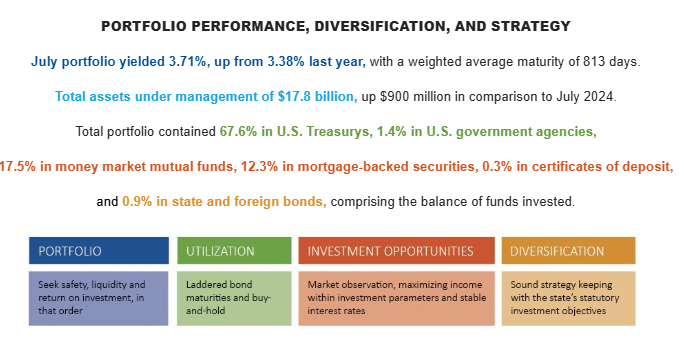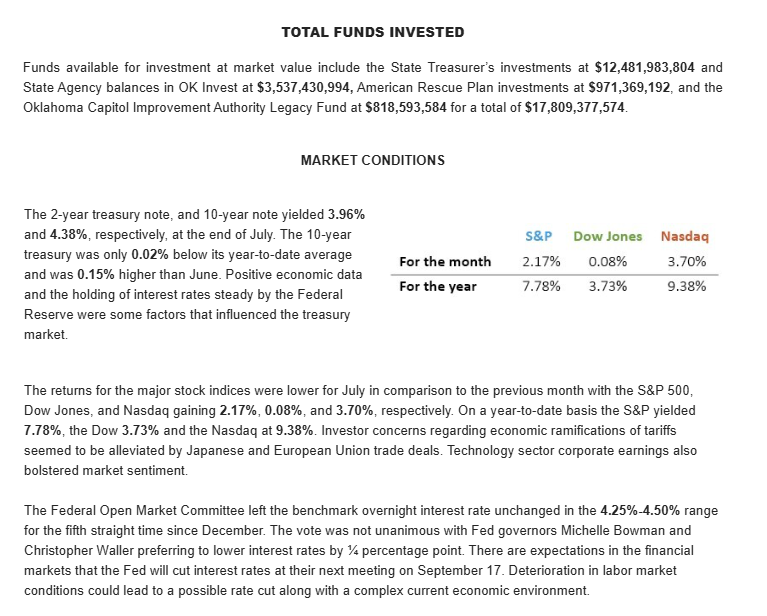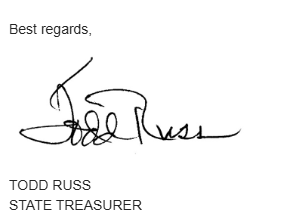


ECONOMIC DEVELOPMENTS
The unemployment rate rose slightly to 4.2% in July. The Bureau of Labor Statistics (BLS) said jobs continued to trend up in health care and in social assistance but declined in the Federal government space. The number of non-farm jobs for July was 73,000, coming in below economists’ projections of 115,000. “The number of long-term unemployed (those jobless for 27 weeks or more) increased by 179,000 to 1.8 million. The long-term unemployed accounted for 24.9 percent of all unemployed people,” as reported by the BLS.
The July Consumer Price Index (CPI) was 0.2% compared to 0.3% in June. On an annual basis CPI advanced 2.7% and was unchanged from the previous month. Core CPI, which excludes volatile food and energy components, gained 0.3% for the month and 3.1% on a year-over-year basis. The monthly gain in the core CPI reflected the largest increase since January. The Producer Price Index for final demand increased 0.9% for the month. The Bureau of Labor Statics said, “On an unadjusted basis, the index for final demand advanced 3.3% for the 12 months ended in July, the largest 12-month increase since rising 3.4% in February 2025.”
Retail sales in July rose 0.5% and June was upwardly revised from 0.6% to 0.9%. The increases in June and July followed consecutive spending declines in April and May. According to UPI News, “Car dealership sales climbed 1.6%, and furniture stores’ sales were boosted 1.4%. Online sales jumped 0.8% in July, coinciding with Amazon’s Prime Day sale. Gas stations and department stores also saw a rise in spending.”
The median sales price of an existing home increased to $435,300, reflecting a 2% increase from one year ago. Many years of home under supply is attributed to continued record high prices with the supply being 4.7 months in June for unsold home inventory. The National Association of Realtors reported there was a 2.7% decrease in total existing home sales for a seasonally adjusted rate of 3.93 million and no change in sales year-over-year. As of this report, the average 30-year fixed rate mortgage was 6.60%.
The real gross domestic product (GDP) increased more than expected, coming in at 3% in the second quarter. The Bureau of Economic Analysis said the gain reflected a “downturn in imports and an acceleration in consumer spending that were partly offset by a downturn in investment.” According to Market Watch, taking the GDP first and second quarters together the U.S. economy grew at an average of 1.25% which in normal times would be a below-average rate of growth.
COLLATERALIZATION
All funds under the control of this office requiring collateralization were secured at rates ranging from 100% to 110%, depending on the type of investment.

View full report below.

















